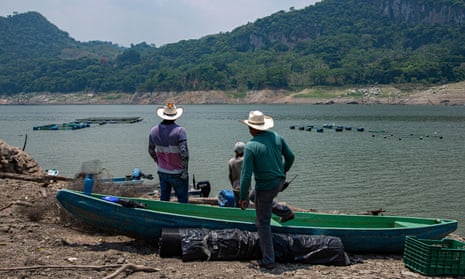Extract from The Guardian

Record temperatures will continue to put stress on power grids with blackouts reported in some areas
Mon 26 Jun 2023 19.59 AEST
Last modified on Tue 27 Jun 2023 03.41 AESTAt least 50 million people have been placed under extreme heat advisories as temperatures are forecast to soar at least 5-10C above the climatological average, with daily maximum temperatures reaching 40-45C (104-113F). San Angelo airport in Texas has already recorded two consecutive days where the temperature hit 45.6C (114F), which surpasses its highest ever temperature by three degrees.
This heat will continue to put stress on power grids across the southern states and Mexico. Texas in particular is uniquely vulnerable to power failures as it is the only state in the contiguous US that is disconnected from the national grid. As a result, the power grid operator for Texas has asked residents to voluntarily cut back on electricity due to anticipated record demand.
In Mexico, demands on energy have already surpassed last year by 9% due to the heat. Blackouts have been reported in Cancún and Tulum, leaving many without air conditioning and fresh water. Several heat-related deaths have been reported by local media.
Across Australia, a long band of rain will stretch more than 3,000km (1,800 miles) from the north-west through to the central region and into the south-east – including the outback. It is expected to bring anywhere between 10 and 100mm of rainfall across the entire region through this week. For the outback, this will easily surpass the winter climatological average for rainfall in just a few days.
An area that is particularly at risk is around Alice Springs and Yulara, across southern and western parts of the Northern Territory, where the highest rainfall totals are expected of 50-100mm. This region of the Northern Territory is classed as a semi-arid or arid environment and on average receives only 250-300mm of rain every year. Alice Springs usually gets only 10.3mm of rainfall in June. As a result, the Australian Bureau of Meteorology has issued a flood watch warning through the entire week across four states.
No comments:
Post a Comment